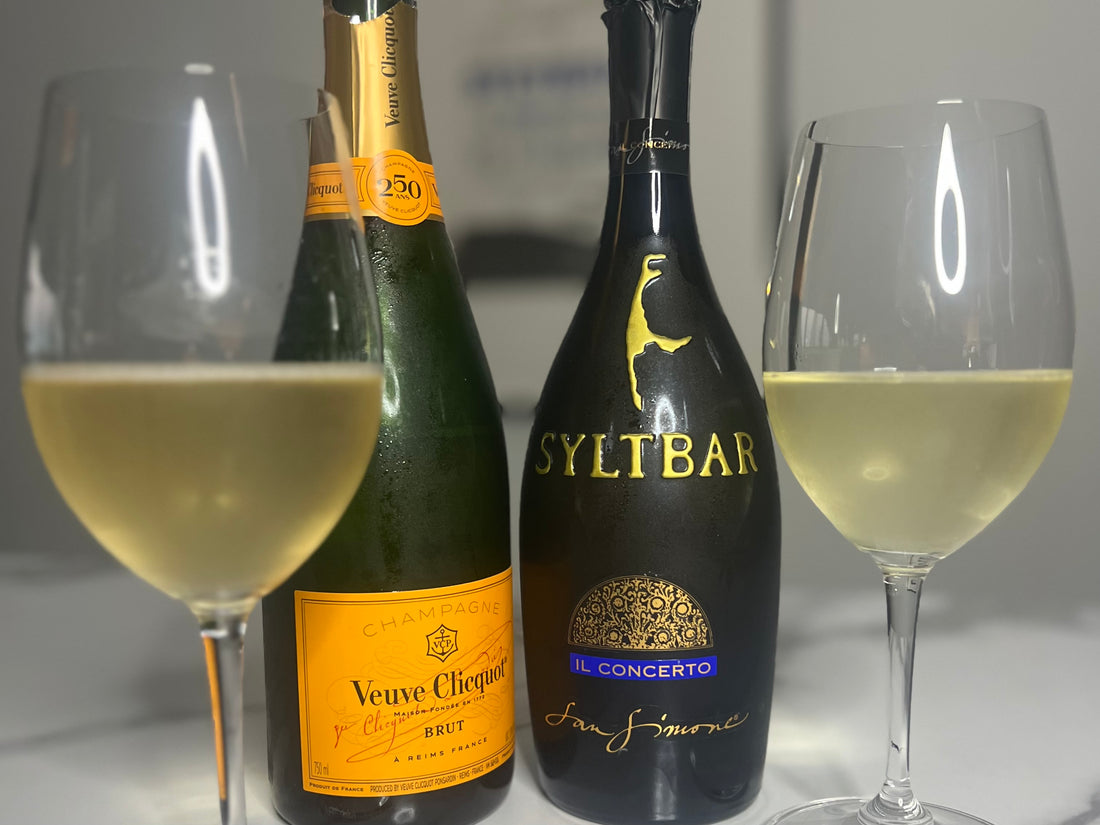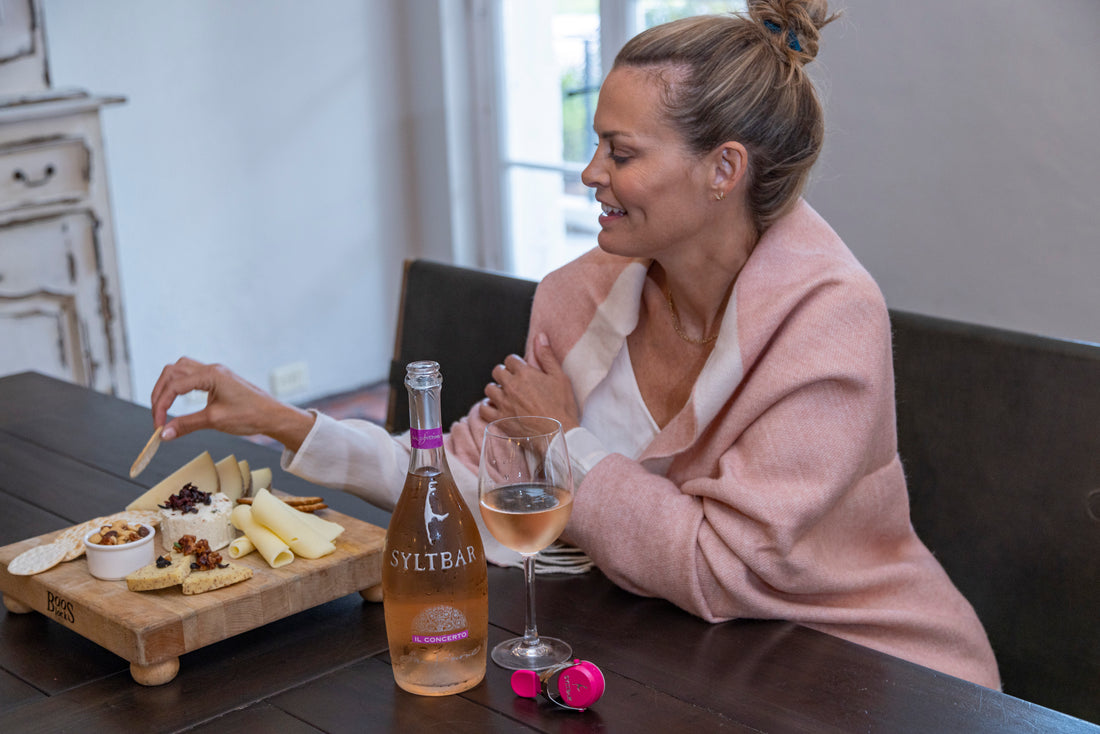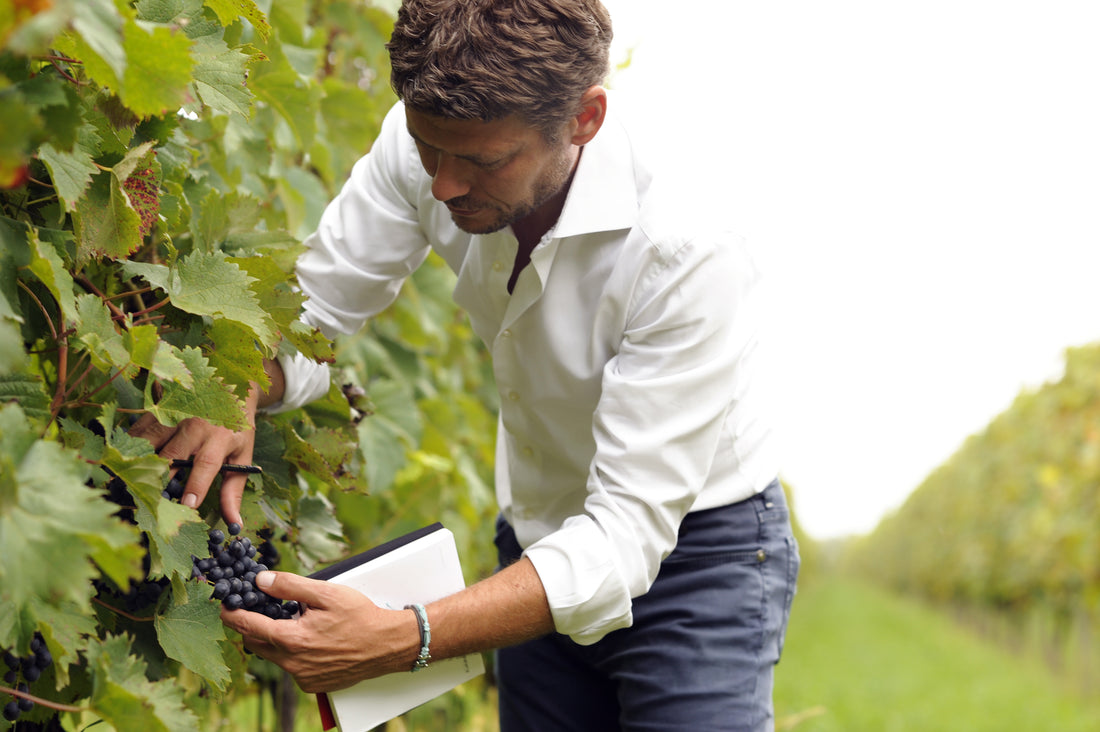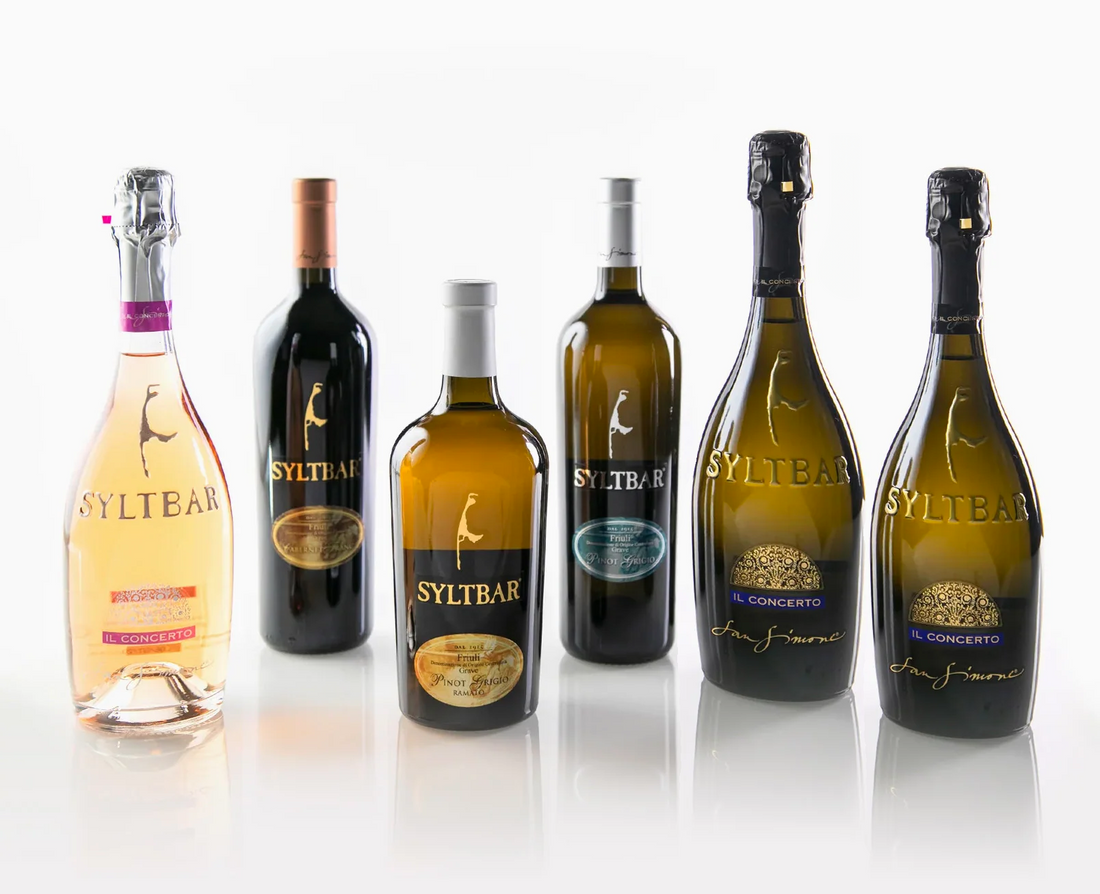You may see Veuve Clicquot on more retail shelves and restaurant menus than you see between our family-owned-and-operated, all natural Brut Prosecco and the brand that has become synonymous with Champagne, Veuve Clicquot. We’ll tell you one thing off the bat — one if not nearly as guilt-free as the other. Any guesses as to which one that is? If you’re not new around here, we’re sure you know the answer.
SYLTBAR vs. Veuve Clicquot History
Vineyard owner Philippe Clicquot started a wine company in 1772, but this particular champagne, Veuve Clicquot, didn’t have its first vintage until 1810, after both Phillippe and his son had passed and the company was left to his widow. Hence the name of the Champagne: “Veuve” means widow in French. Madame Clicquot became known as “La Grande Dame” of Champagne, and she is responsible for iconizing this Champagne brand when she chose to use the yellow label that everyone knows today. That label’s trademark was registered in February 1877.
While Veuve started as a family-owned-and-operated brand, it no longer is. In 1987, it was acquired by a large and powerful luxury goods company, LVMH — the product of champagne brand Moët & cognac brand Chandon, Hennessey and fashion label Louis Vuitton.
SYLTBAR, on the other hand, has been owned and operated by the same family — one single family — in Friuli, Italy for over a century, passed down from generation to generation, never once succumbing to being purchased by a big brand or manufacturer, going all the way back to 1915. The family values and believes in the profound connection between wine, culture, and community. Their approach celebrates the pleasure of wine within the rich tapestry of its cultural and environmental context, honoring the people whose dedication brings it to life.
At the heart of our producer’s philosophy lies the belief that the intertwining of product, environment, and human endeavor creates a truly enriching experience. Our winery, San Simone, believes in preserving the integrity of its wine, keeping it pure both in its actual production process, and in the people who make it happen.
SYLTBAR vs. Veuve Clicquot Calories and Sugar
When major brands are involved, mass production becomes essential for widespread global distribution. This ensures accessibility at convenience stores like Walgreens, CVS, and gas stations, catering to last-minute buyers. Additionally, positioning the brand as a prestigious gift option at the $50.00 price point instills confidence in both the giver and recipient, affirming the value of the purchase.

The full story behind wine production is often overlooked by end consumers. Take the Champagne region, for instance; its limited grape yield makes large-scale production impossible. In such cases, grapes are sourced elsewhere and transported to Champagne for processing, legally allowing the product to be labeled as Champagne.
Similarly, in the fashion industry, garments are often primarily manufactured in countries like China, with only final touches applied in places like Italy. Despite this, brands can legally claim "Made in Italy" status. Legalities surrounding product origin can be intricate and misleading.
In the wine business, this mass production leads to the need for added sulfites to preserve the wine for longer periods of time, but also the need for added sugar due to the brand’s cutting back on fermentation time to save time and money. More sugar = more calories = less guilt-free.
One of the main reasons for a sparkling wine having more calories is due to its alcohol level. Veuve Clicquot is 12%-13% ABV, and SYLTBAR is 11.5%. Higher alcohol content = higher calorie content.
Let’s look at the calorie and sugar breakdown of a 6 oz. glass of Champagne versus a 6 oz. glass of SYLTBAR Brut Premium Prosecco. These numbers have been acquired from studies done by The University of Miami Diabetes Research Institute.
SYLTBAR Premium Brut Prosecco and Sparkling Rose were both tested against 80 other well-known brands, such as Veuve Clicquot, and the sugar levels and calorie content were compared. The research results showed SYLTBAR as having a significantly lower amount of glucose, fructose and sucrose levels, and in general, overall total sugar content.
The average calorie count/glucose level for Champagne is 140 calories, whereas SYLTBAR Brut Prosecco is only 49 calories. The difference in sugar content is even more astounding. SYLTBAR Brut Prosecco has 166 mg glucose per 100 ml, whereas Veuve Clicquot has 410 mg glucose per 100 ml.
Once you’ve been made aware of these numbers, how can you not reach for a bottle of SYLTBAR over Veuve?

Choosing SYLTBAR Low-Calorie and Low-Sugar Prosecco
You may see Veuve Clicquot at wine shops, bars and restaurants more frequently than you see SYLTBAR, and now you understand why. Think about all the marketing dollars that a company as large-and-in-charge as LVMH puts behind its brands, and how wide that distribution reach is.
When you shop for SYLTBAR Brut Prosecco, you are supporting a family, a 100% naturally made wine with organic and sustainable production practices and an ethical workforce that protects and respects Mother Nature.
Cheers to making informed choices without compromising on taste! Shop for low-calorie and low-sugar Brut Prosecco at syltbar.com, or check our store locator to find a retailer near you.







